
| Science, math, & technology timeline | Historical, Political timeline | Education timeline |
Children's & adolescent's literature timeline
| 540 000 | - 1200 - 1799 | 1800 - 1899 | 1900 - 1999 | 2000 + | bottom |
Children's literature, media, literature, literacy, & language arts - home page
To search this page use ctrl f and enter your keyword or words!
This timeline includes events and media to explore the history of children's literature and its development.
While communication, media, literature, literacy, and the tools necessary to be literate are not always in and of themselves specific to children's literature, many are necessary to create and enjoy it.
Therefore, the timeline includes a few examples that are not exclusively within children's literature, but are necessary for its development. For example media with which to communicate.
I have used used a historical approach with midde level learners, undergraduates, and graduate students by asking what is the history of children's literature? how did writing, stories, and printing develop into what we have today. Artifacts and stories used are included in the timeline.
What would you include in an outline for the history of children's literature?
Might want to explore a brief introduction on the development of children's literature, draw your own conclusions, then, consider your own historical researchinto the history and development of children's and adolescent literature: suggestions & ideas to explore.
Enjoy!
Background
A historical study of literature and the human culture that creates it needs material artifacts with sketchs or symbols to study (carvings, clothing, crafts, statues, paintings, books, film, electronic data …).
However, artifacts do not survive forever, and artifacts that do survive, do not provide a complete and accurate representation of all the diversity our ancestors created. Much has been lost with their choices of what to create, what not to save; and what they did save which is now, often incomplete, as time decays all.
Thus, what has survived communicates a bias of what represents the origins of our human culture and literature. Biased, both positively and negatively, by the people who made choices on what to preserve and what has decayed over time.
While also, most likely, providing us with an underestimation of everything that was created and a lack of the great variety of what was created through our history.
For books whose U.S. copyright has expired check 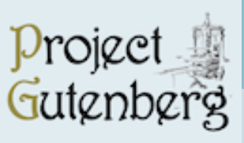
Last edited - January 10, 2026
| Date | Event |
|---|---|
540,000 - 430,000 |
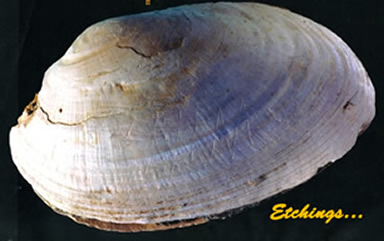
A Shell with zig-zag etchings is left at a site on the Solo River in Java. It is found by Eugene Dubois along with bones classified as Homo-erectus, Trinil 2 sart. Is the shell art, doodles, or a means for communicating? Sources:
|
120,000 B.P. |
|
45,000 B.C.E. |
Carvings: on mammoth teeth, ivory, bone, antlers |
20,000 B.C.E. |
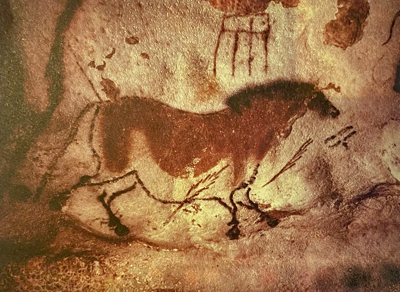
Cave Art: could have been warnings, messages, recorded history, maps, or illustrations or prompts for oral traditions: Additional cave art: Other media
|
What is writing? Writing is a product of civilization, but it is not a necessary product of civilization. Writing seems to evolve in a social group context (religious, political …) starting with symbols, which gradually became associated with sounds. Also create hieroglyphics, sacred writings, which are carved or painted on bone, stone, hides, skin, ceramics, wood, bark, and later papyrus. |
|
3,500 B.C.E. |
Stone is scarce so they use clay tablets and a stylus to create pictograms and ideograms. Such as: an
A pictogram is one of the first illustrations put into writing. With a pictogram being closely related to the text it illustrates. Later started to use phonograms, which will also be used in European alphabets and Chinese characters. However, there lacks clear evidence of any links from Mesopotamia to Egyptian hieroglyphs, Chinese characters, and Mesoamerican scripts. Writing is a product of civilization, but it is not a necessary product of civilization. Writing seems to evolve in a social group context (religious, political …) starting with symbols, which gradually became associated with sounds. Also created is hieroglyphics, which are sacred writings that are carved, painted, and later brushed on papyrus. Among the Sumerians tablets is what might be the oldest recorded story? An English version of the Epic of Gilgamesh and the Humbaba, and an image of a statue of Gilgamesh, in the Louvre Museum.
Sample of Gilgamesh in cuneiform.
|
3,000 B.C.E. |
Papyrus is made by by placing strips of papyrus crisscross on a flat stone. Then treated with a gum solution, pressed and pounded, polished, and added to a continuous scroll. Wrote with reed brushes. |
2,300 B.C.E. |
Syria - evidence of the oldest encyclopedia? The Library of Ebla (c. 2300 BCE) in northern Syria, has around 1,500 clay tablets.While not an encyclopedia as we know it, these tablets recorded the kingdom of Ebla's details on life, language, and trade. Syria's earliest comprehensive knowledge repository. |
1,450 B.C.E. |
It may be the first use of the alphabet. It is believed the first of two lines spells the word ebed, meaning slave or servant combined with the name of a local god to symbolize devotion. The second line nophet, meaning nectar or honey. What do you think the message is? |
1,400 B.C.E. |
China writing on bones - Oracle bones Shang China 
|
770 B.C.E. |
Alphabet, comes from the first two letters of Greek alphabet: alpha and beta.
See chart that compares early languages and the evolution of the alphabet |
550 B.C.E. |
Aesop’s Fables are written. Most are tales with animals who are the anthropomorphic (human characteristics) characters with a short story line and a moral (lesson or theme about what is wise or right and wrong). They have been popular throughout history from which ideas have been used in various stories and media to entertain children and convey moral messages. Aesop may or may not have been an actual person, however, legend claims he was a slave who gained his freedom and became a wise advisor to a king. Through the ages they have always been accepted by churchmen of every faith and from the traditional conservative to the liberal enlightened who believe learning should be a delight. Morals are worldly wisdom, presence of mind, knowing one's circumstances, and above all else, caution. It is curious that collections for children often fail to consider that to fully appreciate them requires adult experiences. Many illustrators are drawn to them and create picture books. His fables are translated into English in 1484. |
1,250 B.C.E. |
Chinese writing on bamboo, silk, and wood started as early as the Shang Dynasty (c. 1400 BCE) and became standard during the Warring States (5th century BCE). |
600 B.C.E. |
Greeks created more than an alphabet. They wrote excellent literature, myths, plays, stories, and informational materials about politics, science, and philosophy. Characters included Hercules, Theseues, and the Olympians, ... |
200 B.C.E. |
Codex, skins, vellum, or parchment was durable and easier to write on, fasten pages into a book or make a scroll. Monks copied many pages and put them together into books and manuscripts. |
0 |
B. C. E. ---------- C. E. |
105 C. E. |
Paper originated in China. Its use spread to the middle east in 500, Italy 1270, and Europe 1300. Paper is introduced westward with Arab trade and expansion. It becomes the preferred surface for writing and printing as it can be quickly made and in large quantities. It is light, flexible, and can reliably be printed on. As a result, it will replace the use of costly parchment, made from animal skins. |
| Romans: copied books, wrote on wood tablets and covered them with wax. Latin word liber is root word for library. |
|
Book comes from boc, Anglos Saxon word for beech, since they carved letters into slabs of beech bark. See nice history on development of the modern hardback book. |
|
113 C.E. |
A masterpiece of Roman engineering and art. It is a continuous spiral frieze with detailed illustrations that combine as a narrative that tells the story of the campaigns. 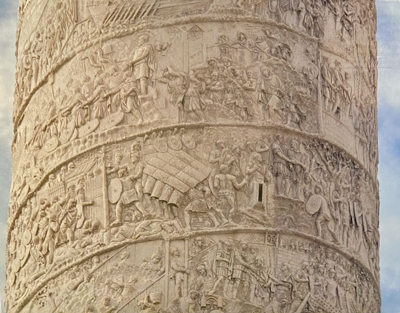 |
| 220 | Chinese invented wood block printing to print on textiles |
| 868 | First Chinese book - Diamond Sutra - printed with wood block printing |
| 990 - 1051 | Chinese invented ceramic movable type. |
| 640?-70? | Aldhelm abbot of Malmesbury, First to write lesson books in either rhymed or question-and-answer form. |
| 1033-1109 | Anselm, Archbishop of Canterbury, wrote an encyclopedia on manners and customs, natural science, children's duties, morals, and religious precepts to instruct and instill principles of belief and conduct. |
| 1050-114? | Scroll of Animals, Toba Sajo. |
| 1066 | A story in textile about the Invasion of England or the Battle of Hastings (1066) told in thread - Sites for the Bayeux Tapestry |
1200 - 1799
| Date | Event |
|---|---|
| 1200 | |
| 1257 | The Grolier Codex. consists of eleven damaged sheets of fig-bark paper that is an almanac for the planet Venus. It is thought to have originally been about twenty pages. It is written and illustrated in a combination of Maya and Mixtec 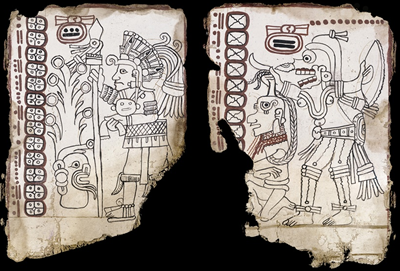
|
| 1300-1500 | Chinese movable type first wood then metal. Was tedious because it required thousands of characters to complete a book. |
| 1386-1395 | Chaucer's Canterbury Tales 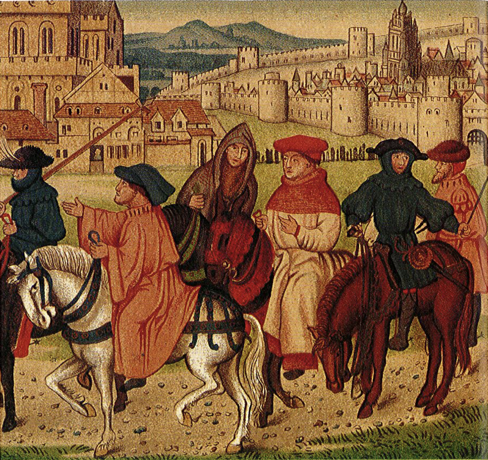
One tale, Three Young Men and Death, told by one of the 30 pilgrims on their 55 mile trip from London to Canterbury. |
| 1455 | Johann Gutenberg is the first to use movable type with a printing press (probably adapted from an olive or wine press) to print a complete book with this method. See STEAM timeline
The first book he prints is the Gutenberg Bible. He also prints and sells other religious stories and playing cards.
|
| 1422-1491 | William Caxton was the first printer in England. Some titles he printed were: Caxton's Book of Curtesye, Sir Thomas Malory's Le Morte d'Arthur, The Recuyell of the Historyes of Troye, The Boke of Histories of Hason, The Hitorye of Reynart the Foxe, The History of Jason, and The Fables of Aesop's. During the Reformation (1533 Henry VIII) a new moral ernestness will bring new purposes for literacy ,and protestant authority will abhore many of these books published by Caxton. History of printing in England and William Caxton is described in The Load of Unicorn by Cynthia Harnett (1959) a children's historical fiction book Bendy's Quest. (Map) |
| 1440 |
Right. Miss Campion holding a hornbook, 1661. From Tuer’s History of the Horn-Book. Supposedly Queen Elizabeth I used a hornbook and it's still in existence. It is believed she gave a silver hornbook to Lord Chancellor Egerton. Source |
| 1450 | The earliest Robin Hood ballad known refers to itself as the talkyng of the munke and Robyn Hode. It is untitled, but usually scholars give it the catchy title of Robin Hood and the Monk. However, it is spoken not sung. Source
|
| 1476 | Caxton's printing press |
| 1484 | Aesop's Fables - translated and printed in England by William Caxton |
| First books that children read were written for adults |
|
| 1487 | Les Contenances de la Table, by Jean Du Pre? first printed book intended to be read specifically by children, other than Latin grammar books a French book of rhyming quatrains on table manners. |
| 1509 | Fortunatus written in German possibly by Hans Sachs An English translation appears later. Fortunatus, is a poor young man who gets a magical purse that never runs out of money and a wishing hat that can transport him anywhere instantly. He lives a life of wealth and adventure, but his greed and the misdeeds of his two sons ultimately lead to misfortune and tragedy, giving the tale a moral theme about the dangers of greed and material gain and the limiting nature of worldly riches. |
| 1516 | Sir Thomas More writes Utopia, first use of the word, utopia, that means an imagined place or state of things in which everything is perfect: paradise, nirvana. Opposite is dystopia. |
1539 1544 1584 |
Dorothy Penn writes that Mexico had a printing press in 1539 that printed booklets in Spanish to instruct Native Americans in the christian faith. |
| 1563 |
A history of martyrs who died for Christ is a fast paced narrative with woodcut illustrations on every page depicting the politics and history of the times. Including gruesome colored illustrations of martyrs being burned. |
| 1570 | First known printed picture alphabet is in, A Methode, or Comfortable Beginning for All Leaarning by John Hart. It taught reading, using phonetic methods. |
| 1590 | The Faerie Queene by Edmund Spenser - part one is written & part 2 is written in 1596 It is an epic poem celebrating virtue, chivalry, and Elizabethan ideals. Characters in six books represent a moral virtue, as each embarks on quests in a fantastical world with faeries, monsters, and enchantments. The Redcrosse Knight battles for holiness with a storyline symbolized by the struggle between good and evil. It is also a tribute to Queen Elizabeth I, portraying her as the ideal sovereign and a guiding figure of moral authority. |
| 1594 |
An adventures of seven legendary knights of European nations: St. George of England, St. Denis of France, St. James of Spain, St. Anthony of Italy, St. Andrew of Scotland, St. Patrick of Ireland, and St. David of Wales. Each undertakes perilous quests to fight dragons, rescue maidens, and defend the faith against pagans and monsters. Their exploits celebrate courage, loyalty, and Christian virtue, blending chivalric adventure with moral allegory. Source |
| 1600 | Shakespeare Shakespeare’s writings are adult literature. However, children and middle level learners become familiar with Shakespeare as a famous writer. How he is presented to children is for you to decide. Examples at Shakespeare for Kids. One way is to share phrases used in his work. He may not have been the first to use them, but he helped popularize them throughout the world.
Source Jamieson, Lee. List of Phrases Shakespeare Invented. ThoughtCo. |
| 1605, 1610 |
Inspired by chivalrous ideals he gained from his literary past he arms himself with a lance and sword, mounts his trusty steed (old nag), Rocinante, and sets out to defend the helpless. In his quest he befriends, Sancho Panza, who becomes his loyal and faithful squirer as they travel La Mancha in search of adventure and glory to honor the Princess (peasant women) Dulcinea del Toboso. Cervantes has described his books as humerous tales to undermine ideas in other "vain and empty books of chivalry". |
| 1630-1790 | Chapbooks Chapbooks inexpensive books from a penny that were sold by peddlers (chapmen). They had 16, 32, 64 pages that were usually folded with no binding or fastener.
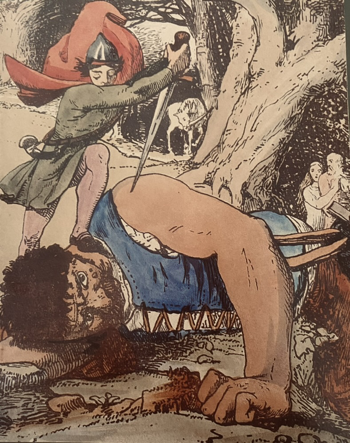
|
| 1657 | World's first children's picture book Moravian bishop and educator, John Amos Comenius (1592-1671) puts into practice his belief in better education for children by writing, illustrating, and publishing in Nuremberg Orbis Sensualium Pictus, (The World Illustrated). A German/Latin textbook with pictures and descriptions of all chief things in the World. It was to entice witty children to it ... to stir up their attention... by sport, and a merry pastime. It is translated to English in 1659 as A World of Things Obvious to the Senses. However, the verses don't translate well into English and the images were as Comenius's children experienced appalling suffering died of privation in a time of war, torture, death, disease, and deformities. While it may have been the first picture book, it had little impact on English schoolbooks. The Project Gutenberg EBook - Orbis Pictus |
1646 in England 1656 Cambridge |
Milk for Babes, Drawn Out of the Breasts of Both Testaments, Chiefly for the Spiritual Nourishment of Boston Babes in either England, but may be of like Use for any Children, by John Cotton This is the first book, for children published in the new world. Later he added - A Catechism in Verse, which is thought to tempt children into learning. It begins: Who is the Maker of all Things? The Almighty God who reigns on high. He formed the earth, He spread the sky. Illustrations include - a figure contemplating a tombstones and the burning of Mr.. Rogers, while his wife and 10 children watch. 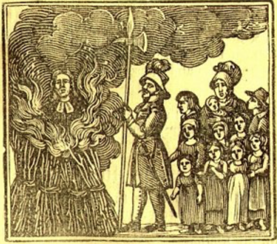 |
| 1662 | Punch and Judy shows appear Punch is a crude puppet known for being mischievous and violent, often at the expense of his wife Judy and baby. Punch commits various atrocities before being confronted by other characters like a constable, doctor, or crocodile. There is no single set plot, a typical storyline involves Punch mistreating his wife and child, killing other characters, and often escaping punishment by his own cunning, sometimes with the help of the Devil. 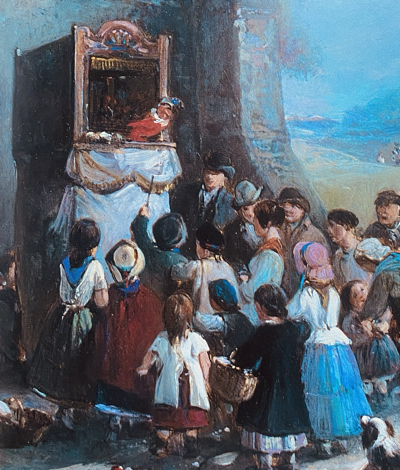 |
| 1671 | A Token For Children: Being an Exact Account of the Conversion Holy and Exemplary Lives, and Joyful Deaths of several young Children Prayers and Graces, Fitted for the Use of Little Children, by James Janeway. |
| 1678 | Pilgrim's Progress by John Bunyan - (part 1 1678, part 2 1684). Out of the Puritan world one great book for children. Bunyan read chapbooks as a child and one History of the Life and Death of that Noble Knight Sir Bevis of South Hampton, was influential in his writing Pilgrim's Progress. More child centered he wrote, A Guide Book for Boys and Girls (1686), later issued as Divine Emblems; or Divine Things Spiritualized (1724) and printed as chapbooks. Its verses are grim by today's standards. |
| 1682 | The Sovereignty and Goodness of God: Being a Narrative of the Captivity and Restoration of Mrs. Mary Rowlandson Mary Rowlandson, also Mary Talcott (c. 1637 – January 5, 1711) a colonial American woman captured by Native Americans and held for 11 weeks before being ransomed, in 1682. Six years after her ordeal, she wrote her book. It is considered a seminal American work read in New England and in England. It can be considered the first American bestseller. A narrative that was a resource for eighteenth and nineteenth-century writers: James Fenimore Cooper, Ann Bleecker, John Williams, and James Seaver. Source |
| 1690 or 91 | New England Primer, by Benjamin Harris It presents the alphabet with rhymes, and has lessons in spelling, reading and catechism. See Franklin's at Yale, 1764. |
| 1693 | An Essay Concerning Human Understanding by John Locke (1632-1704) John describes his beliefs that children are rational creatures with individual needs, not miniature adults to be taught by rote. He believed in the effectiveness of learning through play rather than force-feeding of social values. That children are as blank slates (tabula rasa), which are filled with their sensory experiences, which they can interpret with reasoning and logic. He believes it is the responsibility of adults to educate children and discounted heredity and the idea all children are born with the capacity to learn. His ideas are later ignored and overshadowed by Rousseau. |
| 1697 | Tales of Mother Goose, by Charles Perrault or Pierre Perrault d"Armancour In France Contes de Ma Mere l'oye or Histories of Long Ago or Tales of Long Ago with Morals, or more familiar Tales of Mother Goose is published by the French collection of fairy tales, by Charles Perrault. It is questionable if they are written for children or adults, but children love them: The Sleeping Beauty, Little Red Riding Hood, Blue Beard, The Master Cat or Puss in Boots, Diamond and Toads, Cinderella, Little Thumb, and Riquet with the Tuft. 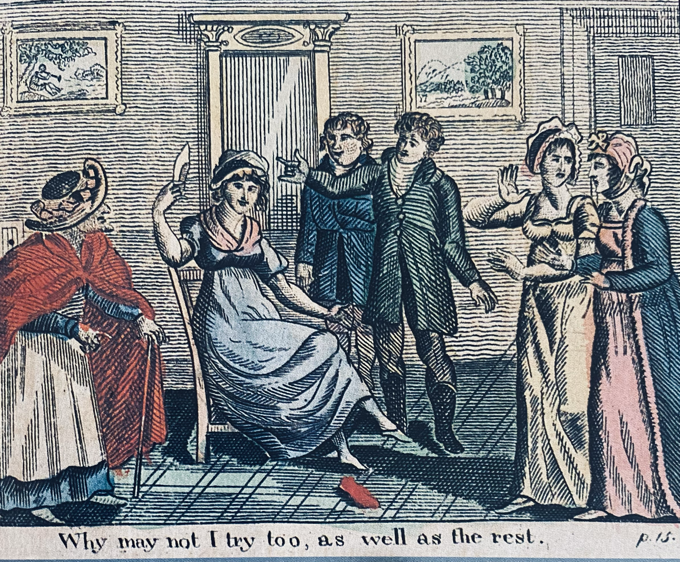
|
| 1712 | A Little Book for Little Children, by T. W. is the first book to use an approach from the point of view of the child, rather than the adult, and combined teaching and entertainment. |
| 1711-1780 | Beauty and the Beast and other fairy tales, by Mme. de Beaumont |
| 1715 | Devine Songs, Attempted in Easie Language for the Use of Children, by Isacc Watts (1674-1748). Moral Songs in lessons and verse were added later. Like about busy bees and quarrelsome dogs, wrote tender and beautiful hymns which didn't dwell on fearful God, but God as our refuge. Like:
Appeared later in New England Primer. And moral songs like:
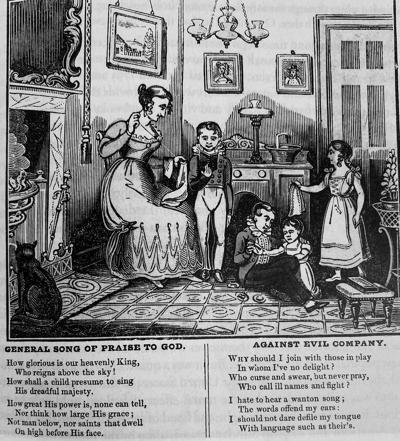
Will be part of English speaking children's childhood for 200 years |
| 1719 | Robinson Crusoe, by Daniel Defoe (1659-1731) An adventure that kids found and adopted. Many copies are published and abridged versions removed may of Defoe's moral ruminations and focus more on a story of a shipwrecked sailor. Crusoe narrates his story and describes how he stubbornly ignores his family's advice and leaves his middle-class home in England to go to sea. Through multiple voyages he becomes a sailor and a merchant, sails again and is captured by pirates, sold into slavery, escapes, acquires a plantation and prospers. Seeking more riches he deals with merchants and other plantation owners to sail to Guinea, buy slaves, and return with them to Brazil. However, a shipwreck makes him the sole survivor, who washes ashore on a desolate island. He journals his spiritual reflections of social problems and practical measures he uses to survive. The theme of shipwrecked and adventure is later copied in 1812, by Johann David Wyss, (1743-1818) in his The Swiss Family Robinson. |
| 1726 |
Worried how it would be received he first published it anonymously as Travels into Several Remote Nations of the World. In Four Parts. By Lemuel Gulliver, First a Surgeon, and then a Captain of Several Ships. Now known as Gulliver's Travels. In 1735 an amended version was published with additons and changes by the publisher and maybe Swift. It has become a cultural phenomenon as most people have images of Gulliver awakening bound in robes with tiny little people crawling all over him, wether they have read the book or not. |
| 1729 | Mother Goose is translated from Franch by R. Samber and published in English as Histories or Tales of Past Times, Told by Mother Goose. by John Newbery, who discovered the importance of children's books as a potential market. With his success in the children's book market he includes a chapbook with each sale of Dr. James Fever Powders (1744). |
| 1744 | A Little Pretty Pocket Book, by John Newbery 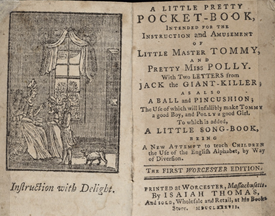
Demonstrates a momentous new approach to books for children, as one of the first books written for the express purpose to entertain and instruct children simultaneously. As the cover page proclaims:
They are moral letters, games, fables, proverbs, poems, rules of behavior, and a rhyming alphabet The style and tone is light and moralistic with many illustrations of children at play. Examples The ball and pincushion is an example of an early reward system, similar to a contract, where pins were inserted into the red side when the child was good and into the black side when the child did bad things. If all the pins were in the red side, the publisher would send a penny, if all pins made it to the black side, the publisher would send a switch. One reasons for an increased demand of children's books is the rise in the number of children in England during this century. Which continually increases the demand for books as a means to entertain and instill high morals as well as teach reading and other information for further schooling as in his series of lesson books, The Circle of the Sciences (1745-1748). Volumes include grammar, arithmetic, geography, chronolgy, rhetoric, and logic. All supporting an increasing demand for schooling. Newbery's greatest contribution is to recognize children as an important part of the social base and a necessary market for children's books. Thus, providing a need to became a serious publisher of children's books to meet these social needs. He is also the first bookseller to recognize the potential for producing games on a commercial scale. However, he is also a publisher of media (books, journals, newspaper, chapbooks, leaflets, flyers ...) for adults, which made him well respected and valued among the London literary, which in turn added value to his work in children's literature. |
| 1749 |
It is considered the first English novel written specifically for girls. Mrs. Teachum is a realistic character in a realistic setting who is a role model for teachers. As a governess of her nine students in a boarding school, she encourages the girls to use books to make them wiser and better in a way with which readers can identify. She allows some fairy tales and a softer approach to children's reading in and out of school. Some later versions change the fairy tales to moral tales or omit them altogether. |
| 1746-1770 | Battledore, conceived by one of John Newbery's workers as a less inexpensive hornbook. It has three folding cardboard leaves. Ptinted alphabets, some easy reading, numerals, and woodcut illustrations. |
| 1751-1772 | The first modern encyclopedia, is published in 17 folio volumes of text and 11 plate volumes between 1751 and 1772. |
| 1754 | First political cartoon  |
| 1762 | Emile, by Jean Jacques Rousseau (1712-1778) He believes children learn best by living the simple life and will become rational with a proper moral character by developing naturally at their own pace, and exploring the world on their own terms. Therefore he believes each story has moral information to inform or educate, not with the fear of Hell, but a pressure of valid information. Rousseau in educaton timeline His adivce is more or less ignored by authors, who write more didactic stories (intellectual - Locke), or religion (Puritanical - who distrust all leisure and thought fiction was dangerous.). However, all saw books as a means to educate. |
| 1765 |
Offering children for the first time realistic characters in a recognizable setting to which they could identify. As such, it is a realistic historical depiction of rural education in England that describes teaching young children, illiterate adolescents, and adults who mke up the underclass of the time. Like many of Newbery's publications it inspired a whole new genre of books with similar plots and expanded adventuresthat are published and successful. |
| 1768 | Britannica publishes its first encyclopedia. It will continue to do so until 2012 when it publishes its last print version and goes to online only. |
| 1773 | Letters on the Improvement of the Mind Mrs. Hester Chapone writes letters to young women detailing their education with a list of recommended books, reading the Bible, controlling one's temper, managing money, and sustaining accomplishments. |
| 1774 | Lord Chesterfield's Letters Philip Stanhope, the fourth Earl of Chesterfield, during the reigns of George I and George II wrote about four hundred letters to his son. Lord Chesterfield, who was neglected as a young man, wanted to be present for his son Philip. However, not being able to, he wrote letters. Beginning in 1737 when Philip was five years old and ending after Philip's unexpected death at the age of thirty-six. The letters are honest and often have funny advice on: art, literature, politics, manners, and how to get ahead in the world. However, Philip did not achieve his father's ambitions and secretly married Eugenia Stanhope, a lowborn woman with whom he has two sons. When Philip dies, Lord Chesterfield did not support the family so to support herself and family she sells the letters, which are published without Philip's approval as Letters to His Son on the Art of Becoming a Man of the World and a Gentleman. |
| 1783 | First to books writetn with controlled vocabulary Cobwebs to Catch Flies by Ellenor Fenn, first volume uses easy words of three letters and the second uses a vocabulary a bit more complex and sentence structure. Fables in Monosyllable 1783 and others she contnues to publish with a readership age beside each title. Marketing ploy! |
| 1783-1789 | The History of Sandford and Merto - four didactic volumes by Thomas Day. |
| 1785 | Mother Goose - First American edition published by Isaiah Thomas. Probably pirated from a Newbery edition. |
| 1786 | History of the Robins, by Sarah Trimmer (1741-1810) an animal story with talking animals. It is thought illogical. |
| 1789 |

Songs of Innocence, by William Blake (1757-1827), is published. It is a book of poems for and about children. He illustrates each with a technique he calls, illuminated etchings, which introduce quality coloured pictures to the world of children’s literature for the first time. See Songs of Innocence and Experience atGutenberg Blog article about William Blake and his works |
| 1796 | The Purple Jar, by Maria Edgeworth (1744-1817) |
1800 - 1899
| Date | Event |
|---|---|
| 1827 | Samuel G. Goodrich (1793-1860) - book publisher and writter under the pen name Peter Parley. Writes pretty Peter Parley's Tales about America, biographies of famous men, which include information for science, history, and geography. Samples Born in Connecticut, sixth of ten children, and his father is a minister. He begins to publish books in 1816. He decides children liked to read non fiction rather than fiction and fantasy so he writes and publishes books about history, geography, and science rather than fairies, giants and monsters. He moves to Boston and creates the psydoneuym Peter Parley and publishes Peter Parley's Tales about America in 1827 for 7-13 years olds. Many of the facts in his books are questionable -
The stories have a lot of moral preaching, prejudices, and biases:
|
| 1803-1879 | Jacob Abbott - wrote a series both for boys and girls. His girl series include
His boy series include
|
| 1804 | Original Poems For Infant Minds, by Ann (1782-1866) and June (1783-1824) Taylor Best known today for - Twinkle Twinkle Little Star Teaches lessons in the manner of Isaac Watt in Devine and Moral Songs for the Use of Children, but more vigorous and fun-loving. |
| 1807 |
|
| 1812 | Kinder-und Hausmarchen, First volume of Grimm Brother's fairy tales by Jacob (1785-1863) & Wilhelm Grimm (1786-1859) They claim the tales they collected are from long ago. However, people thought they were taking literary license and their tales were more recent. For research supporting their claims, read -
The brothers inspire others to collect fairy tales.
|
| 1813 | Swiss Family Robinson, Johann David Wyss (Swiss writer). First page. An adventure about Robinson family who leave Switzerland to settle on the other side of the world. They become the sole survivors of a shipwreck, make it ashore, and create their own tropical paradise. Later movies by Disney and others. |
| 1818 |
A story about a creature, assembled from different corpses, by a scientist who abandons his creation. Alone Frankenstein reaches out several times for friendship. Over and over he is rejected, because of his unusual appearance. After repeated rejections, he sought to avenge the injustices he suffered. |
| 1820 | Ivanhoe: A Romance by Sir Walter Scott It includes the short stories: The Legend of Sleepy Hollow and Rip Van Winkle along with other essays and short stories he wrote while abroad in Birmingham, England. Both stories are early examples of American fiction which are popular across time and have had many versions for all ages. |
| 1822 | A Visit from St. Nicholas or The Night Before Christmas, Clement Moore |
| 1823 | Grimm's Fairy Tales are translated into English by Edgar Taylor |
| 1826 | Mary Had a Little Lamb, by Joseph Hales |
| 1826 | The Last of the Mohicans, by James Fenimore Cooper Adventure of hunters and soldiers struggling against treacherous foes and natural hazards on the frontiers of North America. |
| 1827 |
The image is of a building on the left, a tree to the left of center, and a barn in the foreground. The image shows the courtyard from an upstairs window outside his estate. It was exposed for eight hours during which time the sun moved far enought to shine on both sides of the building. It is in the permanent collection of the Harry Ransom Humanities Research Center at the University of Texas at Austin. |
| 1836 |
Some samples All timelines of children's literature, in America, includes significant contribution by Puritan's on children's literacy in America. Reading is crucial for Protestant religous beliefs based on, no priesthood should be between them and their God. Making it necessary for their children to read and learn. Thus, they are continually thinking about and providing for their children's education in their homes, churches, and towns. Puritans are optomistic that children born in sin could be saved with a relentless educaton. Instruction in doctrine, written for children and designed for their capabilities as the author's believed, provided by family, schooling, church, and writings of church leaders. And so it is that Puritans wrote literature for children: New England Primer, by Benjamin Harris, McGuffey's Reader, by William Holmes, Book of Martyrs (Actes and Monuments) by John Foxe, Pilgrim's Progress by John Bunyan. A Token for the Children of New England, by Cotton Mather, and The Duty of Parents to Pray for their Children, by Increasse Mathers. |
| 1839 | Holiday House, by Catherine Sinclair A story about three siblings, Frank, Harry, and Laura, whose mama died when two laura and Harry were young. In this story they spend a summer at their aunt's holiday house in Scotland. Delightful characters, vivid descriptions, as they romp about and learn important life lessons. |
| 1843 | A Christmas Carol, by Charles Dickens; (1812-1870) His writings are heavily influenced by his being forced to leave school at 12 years old and work ten-hour days pasting labels on pots of boot blacking for six shillings a week to pay of his father's debt, while his father, mother, and the rest of their children are put into debtors' prison. Source Also wrote
|
| 1844 |
The Open Door by William Henry Fox Tabot is an example. |
| 1846 | Book of Nonsense, by Edward Lear; (1812-1888) is a collection of silly verses and pictures. Gutenberg source
|
| 1846 | Wonderful Stories for Children - The Fairy Tales of Hans Christian Anderson Twenty some different collections are published by 1870. Translated by Mary Howitt into English.
Translted by Charles Boner
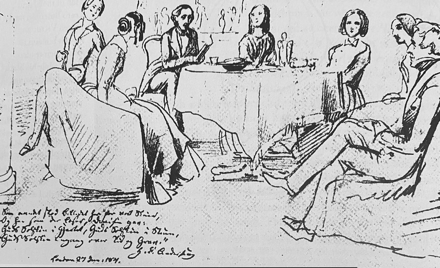
|
| 1851 | King of the Golden River, by John Ruskin Is a children's fairy tale about three brothers who live in a beautiful valley and are visited by the magical King of the Golden River.:
A parable contrasting greed (Hans & Schwartz) with charity and love (Gluck). |
| 1852 & 1853 | A Wonder Book for Girls and Boys, and Gutenberg source with illustrations 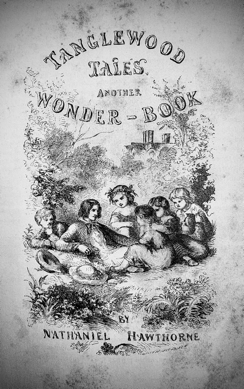
|
| 1855 | The Rose and the Ring, by William Makepeace Thackeray (1811-1863) |
| 1857 | Tom Browns School Days, by Thomas Hughe Is a classic coming of age story about the moral and personal growth of a spirited boy, Tom, at England's Rugby School in the 1830s. It highlights friendship, sports,and bullying (especially by Flashman), under the guidance of the headmaster Dr. Thomas Arnold as Tom learns courage, integrity, and Christian values. Semi autobiographical. |
| 1856 & 1860 | The Daisy Chain and The Clever Woman of the Family by Charlote Yonge. Stories about moral heroines that rise above severe conditions to achieve the good life, usually in the arms of a handsome man. |
| 1862 | Goblin Market, by Christina Georgina Rossetti Is an allegorical poem about two sisters, Laura and Lizzie and their temptations, female desires, and redemption. As Laura indulges in forbidden goblin fruit, sickens, and is ultimately saved by her sister Lizzie's courageous sacrifice, demonstrating the power of sisterly love and selflessness over carnal temptation. Its exact meaning remains open to interpretation, as Laura's consumption of the goblins' fruit mirrors Eve's temptation in Eden, representing succumbing to forbidden pleasures, often interpreted sexually. |
| 1863 | Myths by Charles Kingsley (1819-1875) are closer to the originals than Hawthorne and convey a grandeur tone and style more like the originals. Also wrote the Water Babies a moralistic fantasy where a chimney sweep dies and is reborn in an underwater world where he learns the virtue of kindness and selflessness that he must gain before going to heaven. Gutenberg source |
1865 1869 1872 |
Books Jules Verne (1828-1905)
|
| 1865 | The House that Jack Built, by Walter Crane Is an enjoyable cumulative English nursery rhyme that repeats and builds on each verse with a new element. |
| 1865 | Hans Brinker and the Silver Skates, by Mary Mopes Dodges Is a tale about impoverished 19th-century Dutch siblings, Hans and Gretel who face hardship particularly because of their invalid father. They persevere to help their family by participating in a yearly ice-skating race. Historically set in Holland with windmills, canals, and cultural details. It includes the tale of the boy with his finger in the dike as it teaches lessons on virtue, family, and courage. |
| 1865 | Alice's Adventures in Wonderland, by Charles Lutwidge Dodgson (1832-1898) a mathematics professor at Oxford uses the pen name Lewis Carroll. An example of literary nonsense. Alice follows a White Rabbit down a rabbit hole into a fantastical, nonsensical world filled with peculiar creatures and bizarre events. Where she encounters characters like the Cheshire Cat, the Mad Hatter, and the Queen of Hearts as she experiences absurd adventures, such as a mad tea party and a croquet match. The story explores themes of identity, reality, and the illogical nature of an adult world. Gutenberg source - Alice in Wonderland 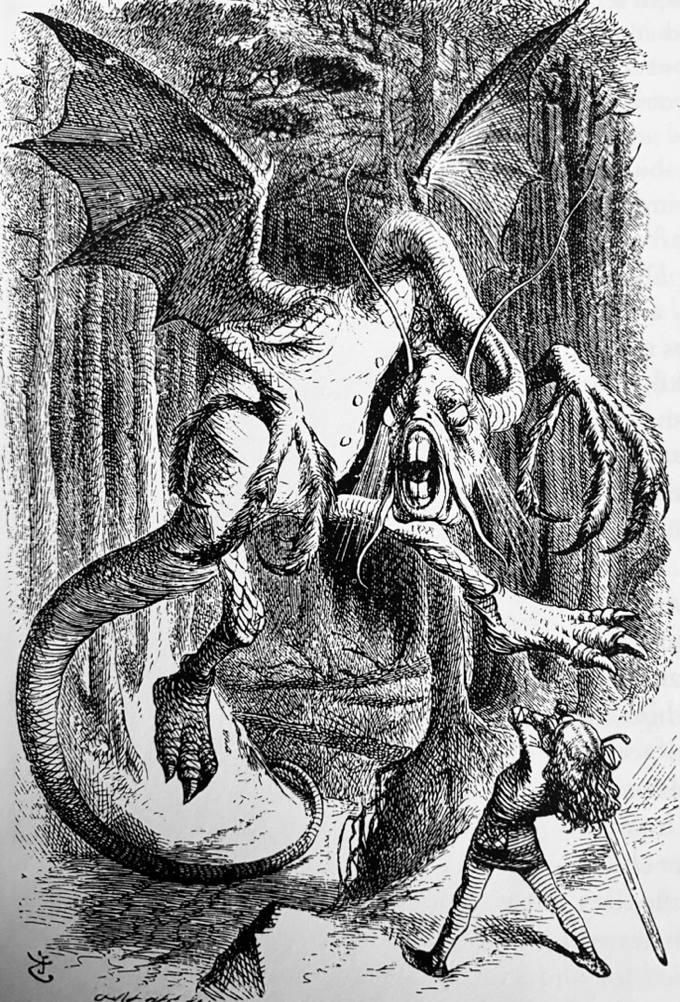
Gutenberg source - Through the Looking Glass (1871), a tad more logical adventure based on a chess match. |
| 1867 | Sing a Song of Sixpence, and other toy books illustrated by Walter Crane A whimsical picture book with nursery rhymes and tales like Sing a Song of Sixpence and an alphabet of familiar characters brought to life with Crane's distinctive, vibrant, original color illustrations. A wonderful blend of traditional verses and whimsical artwork. Gutenberg source with illustrations |
1864 1871 |
The Light Princess and At the Back of the North Wind by George MacDonald The light princess is cursed with weightlessness, physically and metaphorically, and must learn self-sacrificial love to find "gravity" (seriousness and substance) and become grounded. At the Back of the North Wind, Diamon, a pure hearted boy, journeys with the mystical North Wind and learns life lessons, faces hardships, and grows in spiritual understanding and practical compassion. |
1867 1868 |
Little Women, by Louisa May Alcott (1832-1888) published in two books. When she submits it, the publisher tells her it is unacceptable. However, after his children read it, they convince him to publish it. Set in the Civil War its popularity is maintained with the strong realistic characterization of four sisters. Unlike the more traditional didacticism or sentimentalism of authors of this time. Sometimes given credit or blame for attributing the use of blue for boy and pink for girls.
See symbolism of colors and notes for pink Gutenberg source with illustrations 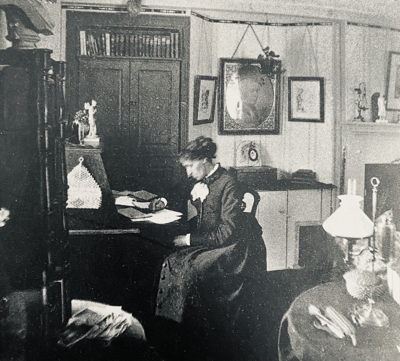
|
| 1868 | The Magic Fishbone, by Charles Dickens (1812-1870) Princess Alicia, is granted a magical fishbone from Fairy Grandmarina that grants wishes. However, but requires wisdom and careful timing to be effective. Themes include; family responsibility, resourcefulness, and sometimes doing good deeds is better than relying on magic. Elsie Dinsmore by Martha Finley (1828-1909) American teacher and author of this series of 26 volumes first published in 1868 about a pious heroine who is, burst into tears and swooned us into repentance. |
| 1870 | The Brownies and other Tales by Juliana Horatia Ewing is a collection of moralizing tales that gave its name to the Girl Scouts in the U.S. |
| 1870 | The Story of a Bad Boy by Thomas Bailey Aldrich |
| 1871 | At the Back of the North Wind by George MacDonald |
| 1872 | Books
|
| 1873 | St. Nicholas Scribner's Illustrated Magazine for Girls and Boys, edited by Mary Mapes Dodge |
| 1876 | Books Samuel Clemens (November 30 1835 (Haley's Comet -1910). He took the pen name Mark Twain which on the river means 2 fathoms or 12 feet, which is the depth of water that is safe or on the edge of safety or danger. He spoke for better treatment of Blacks, women's right to vote, against imperialism, against the savage treatment of people around the world, and the need to be taught over descrimination, and what it is to be human. Also:
|
| 1877 | Black Beauty, by Anna Sewell |
| 1878 | Books Under the Window, by Kate Greenaway |
| 1878 |
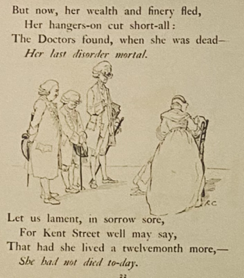
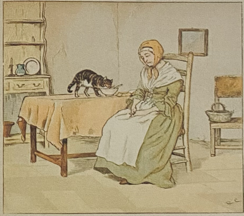 Illustrator Randolph Caldecott is a studied artist who is taught and mentored by artists in painting, sketching, and modeling. His drawings for Blackburn's book, The Harz Mountains, establish his style of satire. He also illustrates Washington Irving's Sketch Book (1875) and Bracebridge Hall (1876). His sophisticated drawings of caricature and being the first to tell a story by cleverly communicating parts of the story in pictures and other parts in text, establish his reputation. 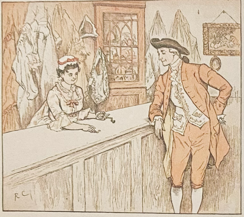
His coloured picture books for children included 's John Gilpin (1878), Oliver Goldsmith's Elegy on a Mad Dog (1879) and The Great Panjandrum Himself (1885). Books illustrated by Randolph Caldecott
For a The Complete Collection of pictures and songs see Gutenberg eBook project |
| 1880 | Books The Peterkin Papers, Peterkin Family, Lucretia Hale (1820-1900);The Lady from Philadelphia. |
| 1880 or 1881 | Books The Five Little Peppers and How They Grew, by Margaret Sidney pseudonym for Harriet Lothrop |
| 1881 | Books Uncle Remus: His Songs and Sayings: The Folklore of the Old Plantation by Joel Chandler |
| 1883 | Books 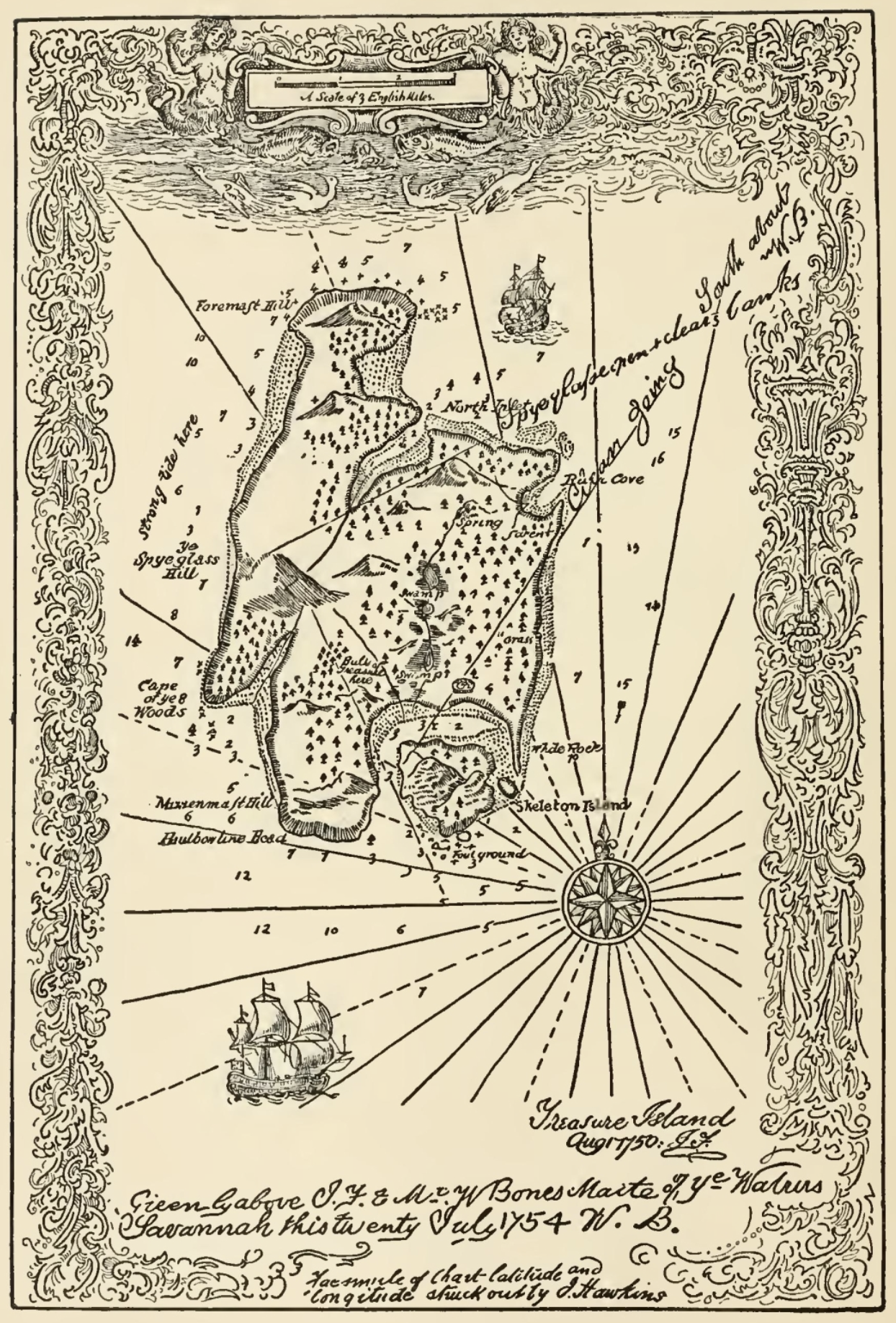
Treasure Island, by Robert Lewis Stevenson Others
|
| 1884 | Books
|
| 1885 | A Child's Garden of Verses, by Robert Louis Stevenson |
| 1886 | Little Lord Fauntleroy, by Frances Hodgson Burnett born in England and resettled in the United States. |
| 1888 | The Happy Prince and other Tales, by Oscar Wilde |
| 1889 | The Blue Fairy Book by Andrew Land; folktales The Yellow Fairy Book (1894) - Gutenberg source |
| 1890 | English Folk Tales is compiled by Joseph Jacobs (1854-1916); followed by Indian Fairy Tales (1892), Celtic Fairy Tales (1892), More English Fairy Tales (1894), and More Celtic Fairy Tales (1894), and, Europa's Fairy Book (1916) |
1891 |
Carnegie Hall opens, May 5, 1891, with a concert featuring Pyotr Ilyich Tchaikovsky. He was there five nights. On his 51st birthday, May 7th he conducted his Suite No. 3. Source Books
|
| 1892 | 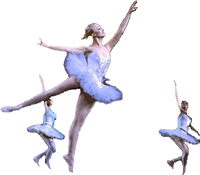 The Nutcracker The NutcrackerRussian ballet. A two-act ballet originally choreographed by Marius Petipa and Lev Ivanov for the score written by Pyotr Ilyich Tchaikovsky. |
| 1894 | Books The Jungle Book, Rudyard Kipling (1865-1936) is a story of a boy (Mowgli) raised by wolves and growing up in British India. Themes include social ideas, justice, and a natural order of life in a jungle setting. Considered by many the best of his pieces. See also his later Just So Stories (1902). |
| 1895 | Books The Time Machine, by H. G. Wells is recognized by some as the first science fiction novel ever published. |
| 1897 | The War of the Worlds, by H. G. Wells is recognized by some as the first science fiction novel ever published. It was first published in the United Kingdom by Pearson's Magazine in 1897 and in the US. by Cosmopolitan magazine in 1898. Later as a book in London by William Heinemann in 1898. Long before the Wright brothers took flight, H.G. Wells has Martians arrive in cylinders, land in England, spread around the world to feed off of humans, aided with heat ray weapons. The Martians he wrote: "heads—merely heads,” with “a pair of very large dark-colored eyes,” a “fleshy beak,” and “whiplike tentacles about the mouth". The plot focuses on mass histeria with an overall theme about the fraility of life. Book source On October 30, 1938, Orson Welles broadcast an adaptation of The War of the Worlds, with the Martians landing in New Jersey, on his radio program, The Mercury Theatre. The broadcast created hysteria among some of its listeners. Virginia OHanlan wrote the Sun editor and asked, "Is there a Santa Claus?" the editors reply ... |
| 1898 | Books Wild Animals I have Known, by Ernest Thompson Seton (Canadian writer) along with another Canadian writer Charles G. D. Roberts who wrote Red Fox may have been the first to write realistic animal stories. |
| 1899 | Books Stalky and Company, by Rudyard Kipling |
1900 - 1999
| Date | Event |
|---|---|
| 1900 | Books The Wonderful Wizard of Oz, by L. Frank Baum. The George M. Hill Publishing Co.: Chicago. Born May 15, 1856 in Chittennango, NY died 1919. |
| 1901 & 1902 | Book Tale of Peter Rabbit, by Beatrix Potter set the standard for illustrations in children's books. She believed that when writing for children one should have something to say and say it in simple direct language. She also wrote diaries in code, sketched fungi and raised prize-winning sheep. Source |
| 1902 | Just So Stories, Rudyard Kipling (1865-1936) is a collection of children’s animal fables related to poems by Rudyard Kipling. Fables with creative descriptions of how different animals acquired physical characteristics, like how a leopard got its spots. |
| 1903 | Books
|
| 1904 | Books
|
| 1908 | Books The Wind in the Willows, by Kenneth Grahame |
| 1909 | Book A Girl of the Limberlost by Gene Stratton Porter
|
| 1911 | Books The Secret Garden, by Frances Hodgson Burnett is a romantic piece rich in symbolism. |
| 1913 | Books Pollyanna, Eleanor H. Porter Made into the Walt Disney film in the 1950's and Black musical made-for-television. Have a sentimental tone and moralizing. |
| 1918 | First separate children's book department was established by Macmillan Company. The book department was headed by Louise Seaman who published a wide variety of informational books. Other children's book departments were created from 1920-1940 Book The Ransom of Red Chief, O. Henry |
| 1920 | Books
|
| 1921 or 1922 | Book The Story of Mankind, written and illustrated by Hendrik Willem Van Loon in 1921.
|
| 1922 | Book The Velveteen Rabbit, by Margery Williams Bianco Nanook of the North is considered the first nonfiction or documentary feature length film. Robert Flaherty lived with the Canadian Eskimos for years when he decided to make his film. A French fur company financed his production. He used film he previously shot and developed new equipment and methods to capture additional shots over one year. Including extreemly cold weather. Filming recorded events as they happened and staged scenes to fit with his narrative. Source |
| 1923 | Book Bambi, by Felis Salten (German writer) Disney Movie increased it's popularity |
| 1924 | The first Hornbook Magazine was published BookWhen We Were Very Young, A. A. Milne |
| 1926 | Book Winnie the Pooh, A. A. Milne about Milne's own son. Written to interest young children and adults. |
| 1927 | Doubleday starts a children's book department Book series
|
| 1928 | Books
|
| 1929 | Book Hitty, Her First Hundren Years, Rachel Field |
| 1930 | Book series First Nancy Drew mystery book The Secret of the Old Clock is published. Carolyn Keene is a pen name for the many authors of the series. The publisher, Edward Stratemeyer, imagined a series as successful as the The Hardy Boys for the female half of the young-adult book empire. Stratemeyer, however, cast Nancy in a traditional female role. However, Mildred Wirt, who wrote 23 of the early 30 books, authored Nancy as a young independent woman that becomes a favorite of the readers and viewers of her adventures in books and other media. See more |
| 1932 | Books Little House in the Big Woods, Laura Ingalls Wilder. Her stories are about a central American plains frontier family life with a strong nuclear family.
|
| 1933 | Book The Story of Babar, Jean de Brunhoff |
| 1934 | Books
|
| 1935 | Book Caddie Woodlawn, Carol Ryric Brink |
| 1936 | Book & illustrator Edward Ardizzone writes and illustrates Little Tim and the Brave Sea Captain the first in his Tim 8 book series. It is a maritime adventures of Tim, a young hero. Edward, is a renowned illustrator of many books beside children's books. He is noted for a naturalistic but subdued style that features gentle lines and delicate watercolours.
For a list of his works see his bibliography at Wikipedia. |
| 1937 | Books
|
| 1938 | First Caldecott Medal awarded.
On February 2, 2010 it sells at auction for $1,000,000. In 2024 it is sold for $6 million. In 2025 it is sold for $15 million.
On October 30, 1938, Orson Welles broadcast an adaptation of H. G. Wells book, The War of the Worlds printed in 1897 with Martians landing in New Jersey, on his radio program, The Mercury Theatre. |
| 1939 | Books
|
| 1940 | Books
|
| 1941 | Books
|
| 1942 | Book The Little House, Virginia Lee Burton |
| 1943 | Books
|
| 1944 | Books
|
| 1945 | Books - see timeline 1945
|
| 1947 | Books
Howdy Doody (puppet) and Buffalo Bob. First kids TV superstars on the Howdy Doody Show. |
| 1948 | |
| 1949 | Crusader Rabbit was drawn for an animated TV show. Creator, Jay Ward, later created the longer remembered, Rocky and His Friends Book 1984. - George Orwell sets 1984 and Animal Farm in dystopian societies. Phrases from these books include Orwellian society and Big Brother. Along with memorable quotes. Such as: Who controls the past controls the future, who controls the present controls the past. |
| 1950 | Book
|
| 1951 | Books
|
| 1952 | Books
|
| 1953 | Winky Dink and You. First interactive TV program for kids. Viewers put a piece of plastic over the TV and drew on it with crayons to help Winky solve problems. Books
|
| 1954 |
Books
The movie Gojira (coined from gorira (gorilla) & kujira (whale) and home environment and in turn the creature destroys Tokyo. Inspired by a March 1954 U.S. nuclear weapons teat at Bikini Atoll that produces 2.5 times the radioactive fallout expected. The radiation radiates tuna and 23 crew members of the Daigo Fukuryu Maru who suffer acute radiation sickness. Over the next 60 years Godzilla will increase in size as shown in this diagram: |
| 1955 | Books
Captain Kangaroo, the Captain, Mr. Greenjeans, Bunny rabbit, and other friends offered morality lessons, for 30 years. Mickey Mouse Club. Kids soap opera for daily after school viewing. |
| 1956 | Psychologist Frederic Wertham testified to Congress that comic books contribute to juvenile delinquency. Book Miracles on Maple Hill, Virginia Sorenson. First page. |
| 1957 | Books
|
| 1958 | Books
|
| 1959 | Books
|
| 1960 | Books
|
| 1961 | Books
The FCC chairman, Newton Minow, declares: TV is "A VAST WASTELAND" The Bullwinkle Show airs. Its themes and plots attract kids and parents who enjoy satire and creative writing. Marvel Comics on November 1961 released the Fantastic Four. A series about four astronauts who travel through a radiation shower and attain super powers because of radiation induced mutations. First radiation induced superhero characters. Newpaper Dorothy Butler Gilliam becomes the first Black women journalist at the Washington Post. In 2019 she writes a book about her experiences: Tailblazer. Listen to Grio's interview of Dorothy |
| 1962 |
|
| 1963 | Books
Mister Rogers Neighborhood. Welcome to the neighborhood, won't you be my friend? Marvel Comics released X-Men in September 1963. It was the first plot with conflict between mutants and normal humans. Where the mutants are forced to segregate themselves at a school for the gifted to protect and rehabilitate them. Professor X is the founder of Xavier's School for Gifted Youngsters (X-Mansion) in Salem Center, Westchester County, New York. Characters include,five mutants: Angel (Archangel), Beast, Cyclops, Iceman, and Marvel Girl (Jean Grey); Professor X and archenemy - Magneto. |
| 1964 | President Johnson's, Great society program funded all types of children's books with nonfiction getting the largest percentage. Thomas Y. Crowell created a series of history books about prominent men and women. Books
|
| 1965 | Books Prydain Chronicles, Lloyd Alexander. The Book of Three and sequels |
| 1966 | The Road Runner Show comes to TV. |
| 1967 | Books
First all female rock band - Ace of Cups. Originated in San Francisco and opened with bands like Jimi Hendrix, Jefferson Airplane, and the Grateful Dead. When they didn't get a record contract they disbanded until 2018. The members incude: Mary Gannon (bass), Marla Hunt (organ, piano), Denise Kaufman (guitar, harmonica), Mary Ellen Simpson (lead guitar), and Diane Vitalich (drums). |
| 1968 | Book From the Mixed Up Files of Mrs. Basil E. Frankweiler, Konisberg Beatles released Sargent Peppers Lonely Heart Club Band, the first concept album that was universally accepted. Bored with what they were doing they sought new sounds and beats.
Mr. Roger's Neighborhood first appeared as a national program on WQED Pittsburgh PA. 2/19/1968. See more on the Educational timeline |
| 1969 | Sesame Street sets a new standard for kids TV and PBS home of good kids' TV Books
|
| 1970 |
Books
|
| 1971 | The Electric Company for kids after Sesame Street to learn to read. Books
|
| 1970+ | Federal subsidies for the purchase of books is stopped and many older titles go out of print. Results in a stabilazation of the number of hardback books published into the 1990's and a significant increase in paperpback books published. |
| 1972 | Books
|
| 1973 | Books
|
| 1974 | Books
|
| 1975 | Books
|
| 1976 | Where Do All the Prizes Go? Milton Meltzer, in Hornbook February 1976. Awards created on the heels of this publication: The Boston Globe-Hornbook Award for nonfiction; The Golden Kite Award for nonfiction given by the society of Children's Book Writers and Illustrators; the Orbis Pictus Award presented by the National Council of Teachers of English; and The Washington Post-Children's Book Guild Award. Books
|
| 1977 | Books
|
| 1979 | Nickelodeon first children's network started and is commerial-free Teachers in New Zealand’s were using oversized or big books for shared reading with their students. Described in Foundations of Literacy (1979) by Don Holdaway. Books
|
| 1980 | Children's book reviewer Hazel Rochman, in an editorial, began to demand authors provide detailed notes on their sources in all informational books. By 1990 most nonfiction books included not just source notes but glossaraies, tables of important dates, suggestions for further reading, and other kinds of supplementary materials. |
| 1981 | The Smurfs. Took marketing to a new level. First seen as sexist, but evolved into a message-heavy show by 1987 Books
|
| 1982 | Books
|
| 1983 | Books
|
| 1984 | The Transformers - characters- based on a toy, plot violence driven, and theme of power are central to every show. Books
|
| 1985 | Books
|
| 1987 | Book Lincoln: A Photobiography, by Russell Freedman one of few nonfiction (biography) to win Newbery Medal award (1988) first since 1956 Carry on Mr. Bowditch. Teenage Mutant Ninja Turtles. Action and violence seemingly reduced with an emphasis on character, teen turtles with Italian artist names, and fight scenes that appear more pretend than realistic ... How can it be violent if it's pretend? |
| 1988 | Book
|
| 1990 | Children's Television Act. Legislation that requires networks to broadcast three hours of educational programming per week. Book Oh the Places You'll Go, by Dr. Seuss |
| 1991 | Mange graphic Novels - Tokyo Babylon: A Save Tokyo City Story, Clamp published in Japan. Story Nanase Ohkawa, Comic Mokona Apapa. Nothing But the Truth: A Documentary Novel, by Avi |
| 1992 | Just Grandma and Me: First Living Book ever produced was released March 31, 1992. Original book by Mercer Mayer was printed in 1983. The Learning Company, Inc. Barney - purple dinosaur. If you love him you're either under five or need something to keep a child occupied while you catch your breath. Marketing the purple reptile seems a fact of nature by now. Isn't evolution great Smurfs ... Barney .... |
| 1993 | Book The Giver, by Lois Lowry. First page. Mighty Morphin Power Rangers - first girl superhero, incase you didn't know, she's the Pink Ranger... Peter Steiner’s cartoon appears in the New Yorker.
In 2023 it will sell for $175,000, the highest amount ever paid to date for a single-panel cartoon.  |
| 1995 | Toy Story produced by Pixar Animation Studios and released by Walt Disney Pictures in the US Nov. 22, 1995. Critics claim it rendered children films like Bambi, Pinocchio, Dumbo, The Lion King... extinct. As the script talks to adults, with its dry humor, as well as children. Paving the way for later filmns such as Shrek, Up, Fantastic Mr. Fox, Wall-E, and so on. Books
|
| 1996 | Blue's Clues. Dective work with an adorable puppy... yeah the color is? Communications Decency Act (CDA) enacted regulations to protect minors from indecency on the Web. It was later found in violation of the First Amendment. |
| 1998 | The Children's Online Privacy Act (COPPA) was written to regulate the personal collection of personal information from children. |
| 1999 | Stardust, by Neil Gaiman. An adult faerie tale. It is discovered by adolescents after the movie Stardust, based on the book, is released in 2007. The plot is an adventure, fairy tale, romance where Tristran (Tristan in the movie) is enchanted to break a spell put on Lady Una of Stormhold. His quest has him find, Star, help break the spell, and gain what he desires. Themes relate to love, promises, & commitments. More so in the book than movie. |
2000 - present
| Date | Event |
|---|---|
| 2000 | The Children's Online Privacy Act (COPPA) goes into effect and begins the regulation of the collection personal information from children. Harry Potter in Books was on the best seller's list for so long that a Children’s Literature best seller list was created. Book Fever 1793, Laurie Halse Anderson. Historical fiction. Fourteen year old, Mattie Cook struggles to stay alive in Philadelphia during a Yellow fever epidemic. Author web site summary. Stargirl, Jerry Spinelli activity - random act of kindness discussion ideas |
| 2001 | ALSC - Robert F. Sibert Informational Book Award for the most distinguished informational children's book published in the preceding year. Sibert is the founder of the Bound-to-stay Bound prebindery. The award is administerred by ALSC who also administer the Newbery and Caldecott |
Yu-Gi-Oh. Let me see. I must have one of those cards here somewhere. Tv series based on the manga book of the same name by Kazuki Takahashi. The main character, Yugi Mutou, solves an ancient Millennium Puzzle, and awakens an alter-ego within his body that is able to assist him with gaming solutions based on the trading cards. It is first aired in Japan in 1998 and in the United States in 2001. Available on DVD Hulu. Yu-Gi-Oh Official web site |
|
Wikipedia launches |
|
| 2003 | Books Getting Away with Murder: The True Story of the Emmett Till Case. by Chris Crowe Green Angel. by Alice Hoffman - activity analyzes Green Angel with attributes of modern fantasy, derived from Frank E. Williams three dimensional model for teaching productive divergent thinking. The Tale of Despereaux. by Kate DiCamillo. novel & graphic novel |
| 2004 | Facebook is launched by Mark Zuckerbert for Harvard students. |
| 2006 | Facebook launches a version for high school students. Facebook opens to anyone 13 and older. |
| 2007 | Movie Stardust see 1999 |
| 2008 | Book The Mailbox by Audrey Shafer - instruction plan - framework to critically analyze different forms of multimedia. Includes example with The Mailbox and Homer's painting, Country School. |
| 2010 | Facebook announces plans to develop controls allowing children under 13 to use the social media site. First, 1938 Superman comic (10¢) sells at auction for $1,000,000 on February 2, 2010! An other will sell in 2024 for $6 million!! AN other will sell in 2025 for $9 million!!! 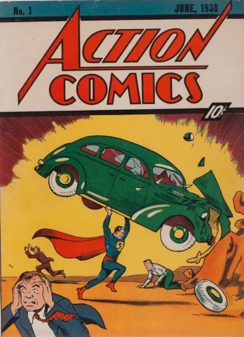 |
| 2018 | Book of Dust trilogy prequal to Phillip Pullam,
BBC TV adaptation of Phillip Pullam's His Dark Materials trilogy, starring Dafne Keen as the child Lyra, Ruth Wilson as the sinister Mrs Coulter and James McAvoy as Lord Asriel. |
| 2019 |
|
| 2020 | 
Graphic novels
|
| 2023 |
Graphic novel
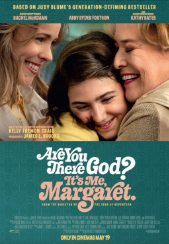
Movie - Are You There God? It's Me, Margaret, Judy Blume. based on 1970 book. |
Home: Literacy, media, literature, children's literature, & language arts
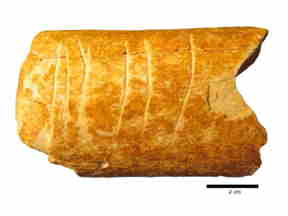 An auroch bone fragment engraved with six lines is left at a site in Israel. Art, communication, doodling?
An auroch bone fragment engraved with six lines is left at a site in Israel. Art, communication, doodling? 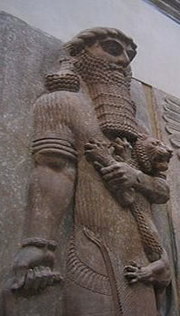 Cuneiform is wedge shaped symbols pressed into clay tablets by the Sumerians who live along the Tigris-Euphrates Rivers, in Mesopotamia.
Cuneiform is wedge shaped symbols pressed into clay tablets by the Sumerians who live along the Tigris-Euphrates Rivers, in Mesopotamia. 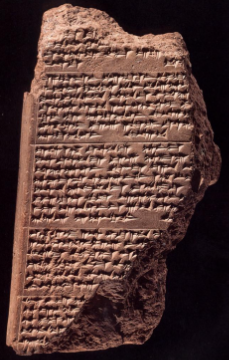
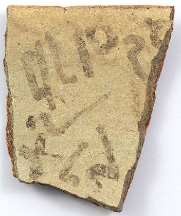
 Trajan's Columnas in Rome is dedicated by the Roman Senate to commemorate his military victories in the Dacian Wars.
Trajan's Columnas in Rome is dedicated by the Roman Senate to commemorate his military victories in the Dacian Wars.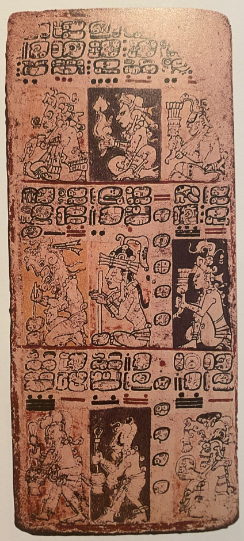
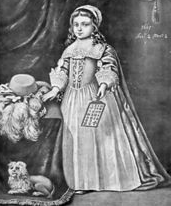 Hornbook had its main purpose to learn the alphabet. Some had upper and lower case letters, sometime common letter combinations and syllables, numerals, and the Lord's Prayer. It was a block of wood with a single parchment or sheet of paper covered with transparent horn to protect the paper, fastened with strips of brass around the edges, with tack heads to protect the horn from scratches, and some could be hung around the neck or on a belt. They were made to be convenient and indestructible.
Hornbook had its main purpose to learn the alphabet. Some had upper and lower case letters, sometime common letter combinations and syllables, numerals, and the Lord's Prayer. It was a block of wood with a single parchment or sheet of paper covered with transparent horn to protect the paper, fastened with strips of brass around the edges, with tack heads to protect the horn from scratches, and some could be hung around the neck or on a belt. They were made to be convenient and indestructible.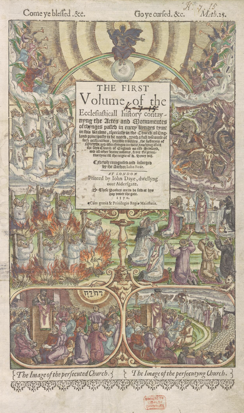 Book of Martyrs (Actes and Monuments) by John Foxe
Book of Martyrs (Actes and Monuments) by John Foxe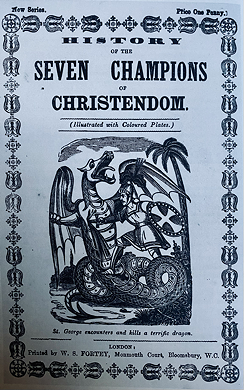 The Seven Champions of Christendom by Richard Johnson
The Seven Champions of Christendom by Richard Johnson 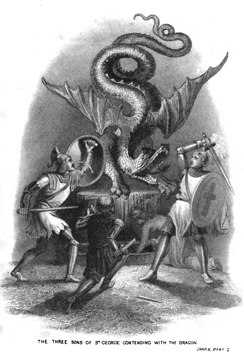
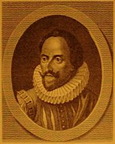 Don Quixote, written by Miguel de Cervantes, published in 1605, was an instant success and is considered the best Spanish novel of all time along with a second volume, published in 1615. Cervantes drew from his experiences to write a popular piece of fiction where a middle aged man, Don Quixote, is the main character.
Don Quixote, written by Miguel de Cervantes, published in 1605, was an instant success and is considered the best Spanish novel of all time along with a second volume, published in 1615. Cervantes drew from his experiences to write a popular piece of fiction where a middle aged man, Don Quixote, is the main character. 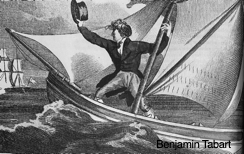 Gulliver's Travels, by Jonathan Swift.
Gulliver's Travels, by Jonathan Swift. 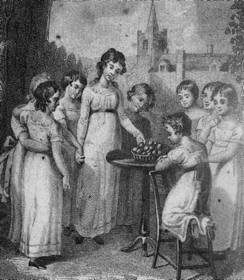
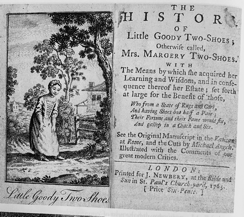
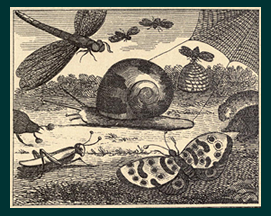 Poem
Poem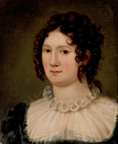
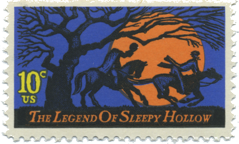 The Sketch Book of Geoffrey Crayon, Gent. by Washington Irving is published.
The Sketch Book of Geoffrey Crayon, Gent. by Washington Irving is published. 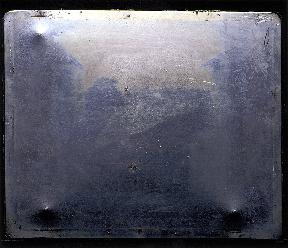
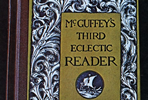 McGuffey's Reader, by William Holmes a Presbyterian clergyman.
McGuffey's Reader, by William Holmes a Presbyterian clergyman. 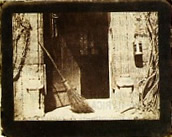 The first photographer saw photography as an art medium and composed their shoots as paintings.
The first photographer saw photography as an art medium and composed their shoots as paintings. 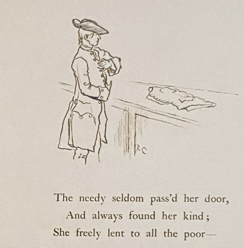
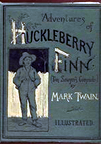
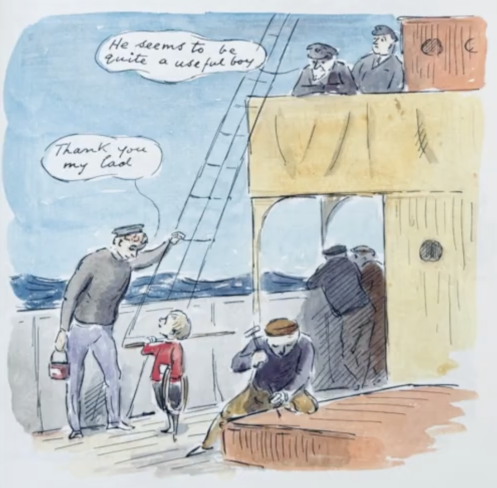
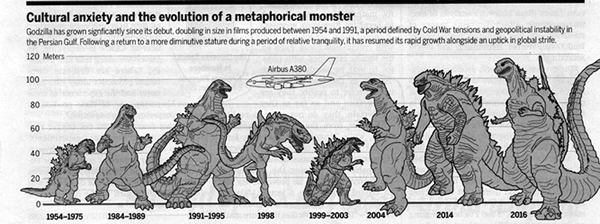
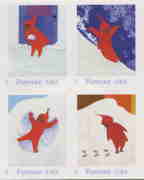
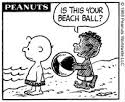
 Graphic novel
Graphic novel